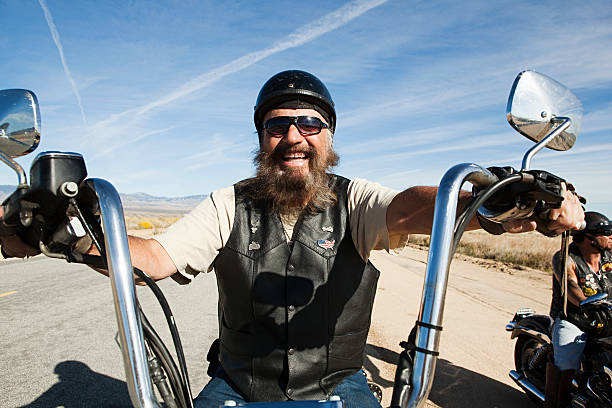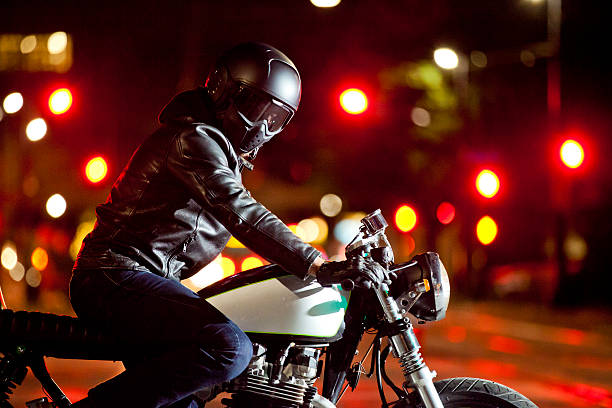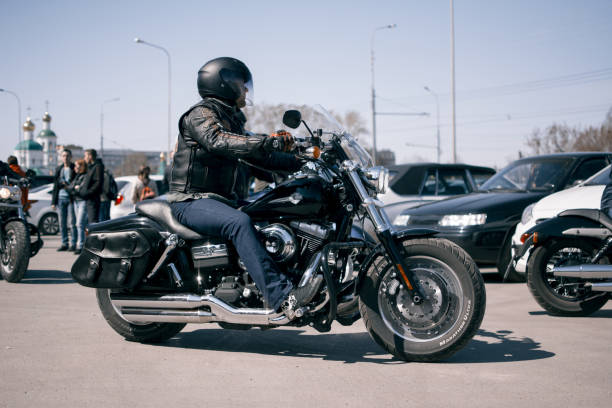Key Features of a Concealed Motorcycle Vest
When choosing a concealed motorcycle vest, riders must weigh functionality, comfort, and safety. The market offers vests with different weather resistance and storage capacities, but the main goal is to discreetly carry personal items and often firearms without compromising access or comfort.

Vest material should be assessed initially. Leather is popular because of its durability and classic elegance, which suits bikers. Leather vests block wind, although they may not be ideal for warm regions. However, polyester and nylon are water-resistant and breathable. These materials are lighter than leather, reducing fatigue on lengthy rides. Material affects comfort and vest utility in different weather situations.
Another critical component is the concealed pocket design. The pockets should give simple access to the contents without being noticeable to the casual observer. The hidden pockets should be fitted into the vest so they don’t bulge or outline stowed goods like guns, personal documents, or electronics. These pockets’ placement impacts the vest’s balance and rider mobility.
Secure and convenient vest closures are also necessary. Traditional button closures give vests a classic style but may hinder access. Zippers are safer and can be hidden under a flap to keep the vest modest. Some vests use magnetic closures, which are secure and easy to use but less robust than zippers.
Another essential element is adjustability. When worn over multiple layers of clothing, a concealed motorcycle vest should have adjustable side panels or straps for comfort and body size. Adjustability keeps the vest firmly to the body, reducing the chance of contents moving during a ride.
Quality of construction determines vest durability. Pockets and other high-stress places benefit from double or triple stitching to prevent tearing. Vest snaps, buckles, and zippers should be made of durable metals to endure the environment and be used continuously.
Reflective components improve rider visibility for other road users and improve safety. Reflective pipes or panels can save riders in low light. Place these pieces strategically to optimize visibility without compromising the vest’s stealthiness.
The vest must comply with local concealed carry rules, for gun carriers should provide concealment means, security, and retention throughout the riding. Specific vests have built-in holsters that secure various firearms.
Comfort is critical when wearing motorcycle gear. The vest’s inner lining should breathe to keep the rider cool and prevent sweating. Joint mesh linings promote airflow, while cushioned linings provide comfort and protection.
A vest’s style is essential since it’s part of motorcycle gear. The vest can be black leather or tactical, with customizable patches and logos. Style often depends on the rider’s taste and motorcycle.
Last but not least, women’s concealed motorcycle vests are becoming more popular. These vests are designed to fit women, improving comfort and concealment. The vest must fit properly and perform effectively, which might be difficult for female cyclists.
Many variables go into choosing a concealed motorcycle vest. Each feature must be carefully studied, including style, comfort, concealment, and durability, to pick the vest that best suits the rider. As manufacturers innovate, options will become more specific, catering to every rider travel.

Legalities of Concealed Motorcycle Vests
Riders who wear a concealed motorcycle vest must navigate a complex legal landscape that varies by jurisdiction. Because such vests hide a weapon, they are subject to concealed carry permits, weapon types, and law enforcement disclosure requirements. Beyond firearm laws, various legal intricacies surround possessing items or devices that could be considered weapons or forbidden in some places.
State and occasionally local laws determine the right to carry a concealed weapon in the US. Most states require a concealed firearm permit or license, which requires an application, background check, and training. These permissions vary in what they allow, how they must be carried, and where weapons can be taken. Some states have “shall-issue” rules that require permits to be issued to all qualifying applicants, while others have “may-issue” laws that give local authorities broad permit issuance authority.
What weapons can be carried in a concealed motorcycle vest depends on the permit. Most permits allow handguns, although automatic knives, batons, and stun guns are often prohibited. These restrictions vary by jurisdiction and may involve federal regulations, especially when crossing state lines. Rider awareness of these laws is crucial to avoid legal issues.
The concealed motorcycle vest’s design might also be examined. If they conceal a firearm too well, vests that hide its outline can be contentious. Wearing a vest that hides a gun could lead to criminal prosecution in jurisdictions where “open carry” is lawful but “concealed carry” is not.
Disclosure requirements are another major legal issue for concealed motorcycle vest users. Many states mandate concealed handgun carriers to inform law police upon contact. State rules vary: some need verbal notification, while others require the permit holder to hand it over for inspection. Misdemeanors or higher charges may occur from failing to reveal carry status, depending on the state and incident.
Different municipal rules within a state complicate using a concealed motorcycle vest. Cities and counties may ban concealed guns in parks, schools, government facilities, and bars. These specialized requirements require riders to know the laws in their riding and travel zones.
Traveling between states with a concealed motorcycle vest needs careful consideration of concealed carry permit reciprocity agreements. Some states accept out-of-state permits. This legal landscape can be dangerous for riders permitted to have a weapon in their state but not across state boundaries.

Since weapon restrictions vary by country, international visitors must be extra cautious. Carrying a concealed firearm, including in a motorbike vest, can be illegal abroad and result in jail time.
Beyond guns, motorcycle vests can conceal ID, EMT supplies, and tech. These objects are generally lawful, but hiding them can create suspicions or prompt legal action. Under certain circumstances, concealing sophisticated surveillance equipment or knives may be prohibited.
Wearing body armor can cause legal concerns. In some jurisdictions, wearing body armor and carrying a firearm can be considered preparation for a crime, increasing legal risks.
In conclusion, a concealed motorcycle vest is a practical and often elegant way to carry firearms and other objects, but it also has a vast legal obligation. Riders must know the legislation in their jurisdiction and each destination they visit to wear one securely and legally. This understanding should include state, federal, and municipal policies that may create limits or requirements. With this understanding, riders can avoid legal issues threatening their freedom and future.






Leave a Reply